Vat Savitri Puja is a very important occasion for the married women of India. This is when the ladies wake up early in the morning, wear traditional attires, offer their prayers to the Banyan tree (Vat Vriksh), and ask for the longevity of their marriage and the well-being of their husbands. The unmarried women can also do the Vat Savitri Puja to find an ideal husband with impressive qualities.
This traditional festival celebrates Savitri’s devotion to her husband and how she was ready to fight with the Gods to bring him back to life. Read on to learn more about the history of Vat Savitri Purnima, the festival’s significance for the married women of India, dates, timings and the puja vidhi (rituals).
History of Vat Savitri Puja
Vat Savitri Puja is closely related to the story of Savitri and her husband Satyavan. You will hear different versions of this story across India but what remains the same is Savitri’s love for her husband, her devotion and her determination to bring him back from the dead. The couple’s story is mentioned in the Hindu epic, Mahabharata (Vana Parva and Shanti Parva sections), along with Markandeya Purana, Vishnu Purana and Bhagavata Purana.
Savitri was the daughter of King Ashwapati of Madra. She was a very intelligent and wise woman. People used to be astonished seeing her because there was no one as beautiful as this princess. Marriage alliances arrived from different parts of the country. But Savitri wanted to marry Satyavan, the son of a blind, exiled King, Dyumatsena. Despite the royal family’s poverty, Savitri was very impressed with the noble character and virtues of Satyavan.
As the preparations for the marriage of Savitri and Satyavan were in full swing, Narada sage came to King Ashwapati’s court and said that Satyavan was destined to die exactly one year from the day he tied the knot with the princess. Even after knowing this, Savitri wanted to marry the exiled prince.
Savitri married Satyavan and moved to the forest. She quickly adjusted to her new life with grace and devotion. She served her husband and his family dutifully. But, she was always conscious of the fact that she had very limited time with her husband.
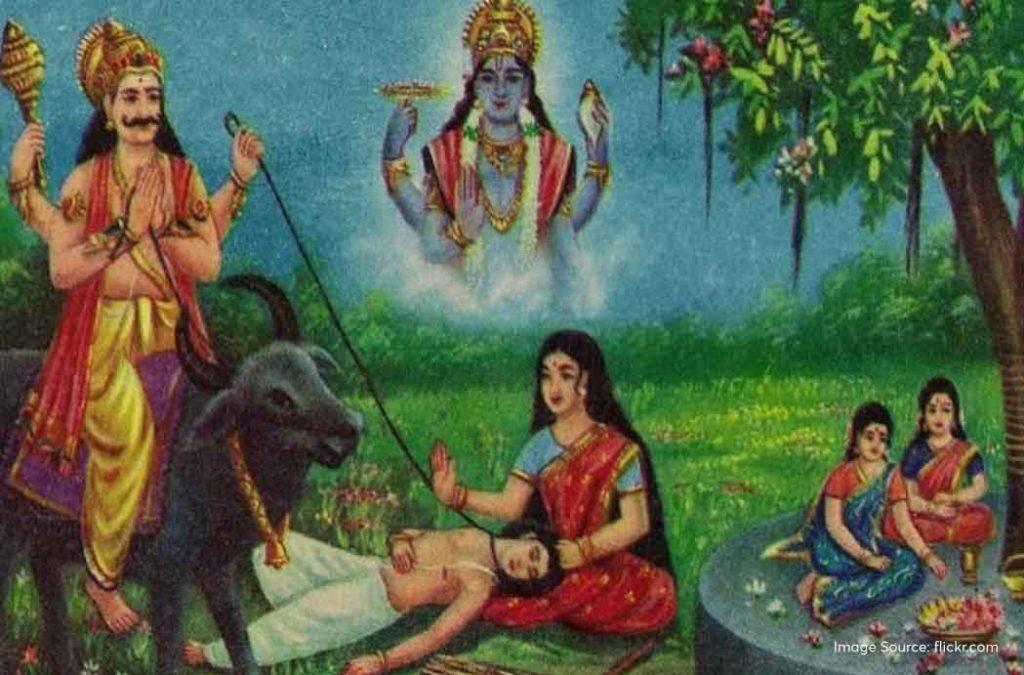
Three days before her husband’s destined date of death, Savitri performed a dedicated three-day fast for his safety and well-being. On the day he was supposed to die, she accompanied Satyavan to the forest. While chopping wood, Satyavan felt extremely weak and laid his head in Savitri’s lap but fell unconscious and died, exactly how the sage had predicted.
Satyavan’s soul was ready to depart and Yama Raj (God of death) arrived to claim it. But, Savitri was adamant. She followed Yama and the soul of Satyavan to the gates of hell. Initially, Yama was irritated with her but he saw how resilient and steadfast she was. Impressed by her love for her husband, he gave her three boons. But, she cannot ask him to bring her husband back to life.
Savitri’s first wish was to restore the eyesight of her father-in-law and grant his kingdom back to him. Yama agreed. Savitri’s second wish was that her father should have a hundred sons so that her parents could take their royal lineage forward. Yama agreed. Savitri’s final wish was to grant her and Satyavan a hundred children so that their family tree could prosper. Yama was outwitted. Satyavan must be alive for him to have children with Savitri. Yama was very impressed with Savitri’s righteousness and devotion. He granted her the third wish as well.
On the day Savitri got her husband back, married women perform the Vat Savitri Puja and ask the deities to grant their husbands a long life.
Significance of the festival
In India, marriage is not just the union of two people but has a very crucial spiritual importance. It is said that the marriage rituals can bind two individuals for not just one but several lifetimes. Two souls come together to grow spiritually, socially and mentally to better heights and be the pillars of support to each other.
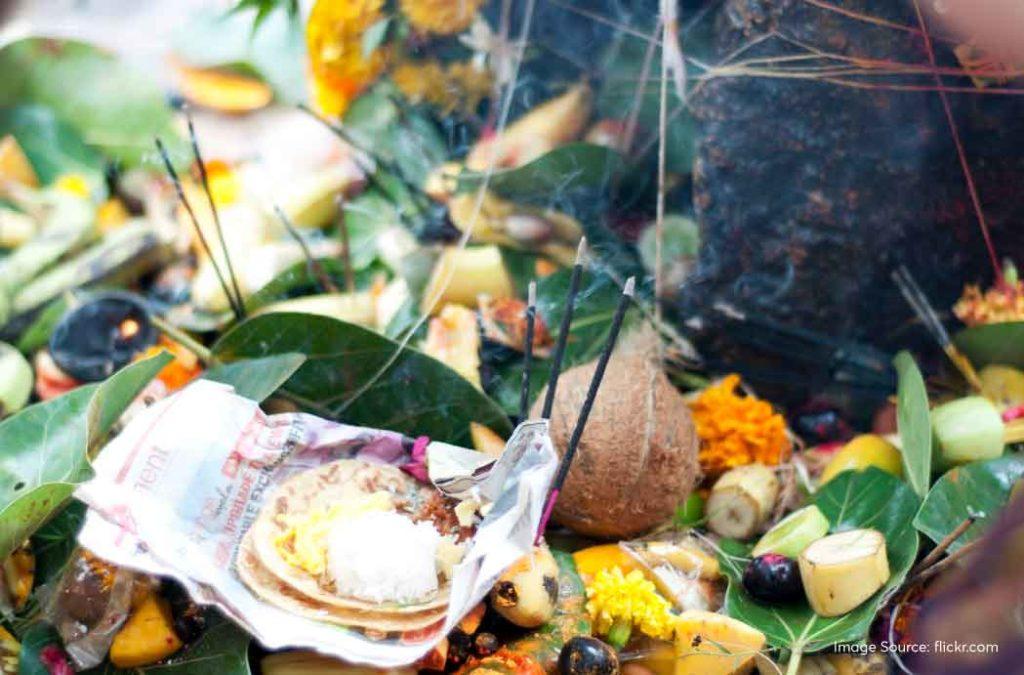
Women perform the Vat Savitri Puja to strengthen family bonds and to pray for the prosperity of their husbands. Vat Purnima also brings the married females of the community together because women come out in groups to fast and perform the ritual around the Banyan tree. They sit down together to listen to the story of Satyavan and Savitri.
This festival highlights the importance of females in a family and how their sacrifices shape and promote healthy relationships. Vat Savitri Puja is all about wishing for love, trust and harmony in a marriage.
Date and timings
There are two lunar calendars that people in India use to determine the dates of their traditional festivals – the Purnimanta calendar and the Amanta calendar. According to the Purnimanta calendar, the month ends on a full moon or Purnima. According to the Amanta calendar, the month ends on Amavasya or the new moon. Most of the festivals fall on the same date on both calendars but this is not the case with Vat Savitri Puja. Women who follow the Purnimanta calendar celebrate it during Jyeshta Purnima and the ones who prefer the lunar calendar celebrate it on Jyeshta Amavasya.
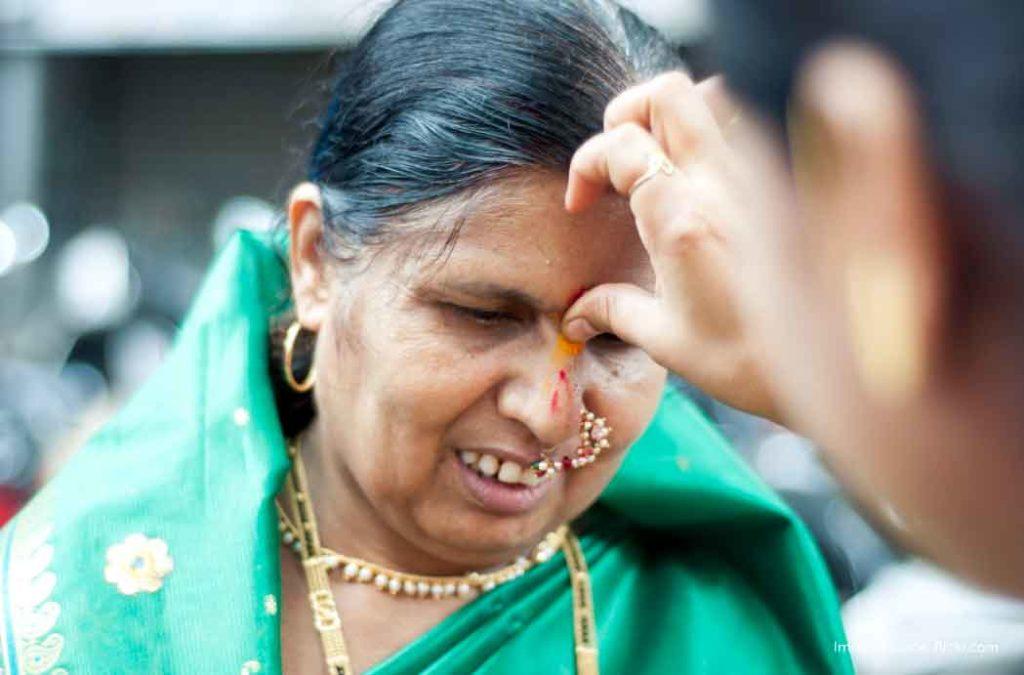
Here are the dates according to both the calendars and the auspicious timings of the festival.
Amanta lunar calendar
Date – 6th June 2024
Timings – 7:54 PM, 5th June to 6:07 PM, 6th June
Purnimanta lunar calendar
Date – 21st June 2024
Timings – 7:32 AM, 21st June to 6:37 AM, 22nd June
You can celebrate the festivals on either of these days. Mostly, the women who hail from north Indian states like Gujarat, Rajasthan, Jharkhand, Uttar Pradesh, Bihar and Himachal Pradesh among others, celebrate the festival according to the Purnimanta Calendar. The people from the other Indian states in the west and south like Maharashtra, Karnataka and Orissa follow the Amanta Calendar.
Preparations for Vat Savitri Puja
To put it in simple words, on Vat Purnima, women do a day-long fast and tie a holy thread around the Banyan tree that signifies strength, longevity and prosperity. They break the fast after performing the final puja ritual and take blessings from their husbands.
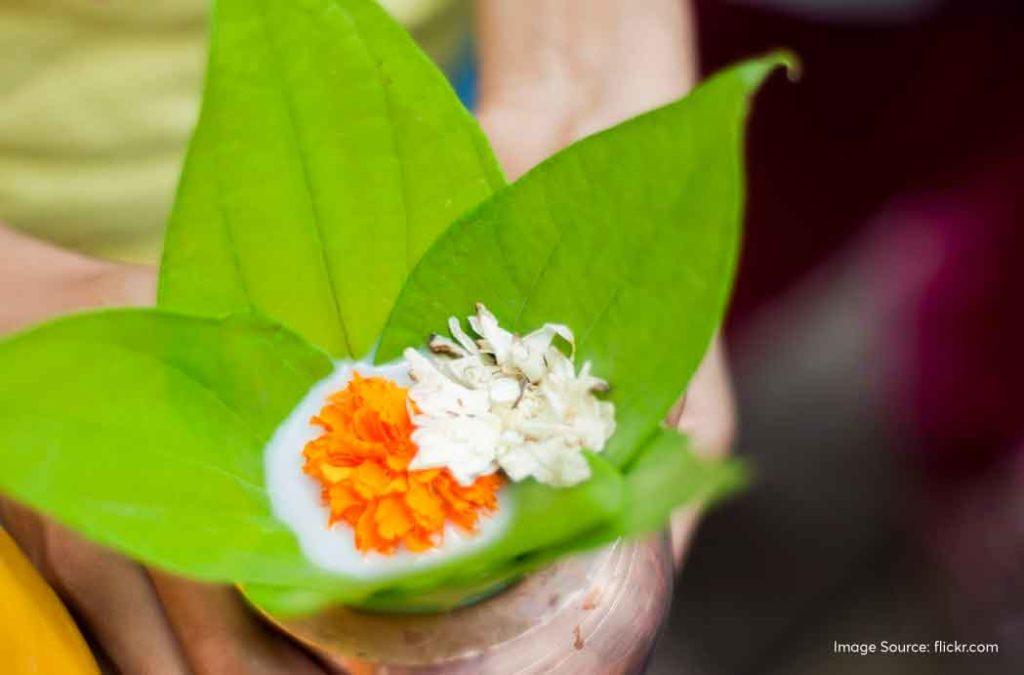
The women sweep and mop their houses before they begin with the ritual. They also light incense sticks and puja dhoop to drive away any negative energy from the household. They decorate their doorsteps with flowers and holy mango leaves. You will also find colourful rangolis everywhere on this day. It is even better if you can sprinkle holy water or diluted turmeric water around the house.
For the puja, here are the things that you will need.
- A photo of Savitri and Satyavan. You will easily find the ones that will also have the picture of Lord Yama and the Banyan tree.
- A small earthen pot with soil and a sapling of the Banyan tree. People also use copper pots but it is very auspicious to use pots that are made of mud or clay.
- A copper pot or kalash with fresh water or rose water
- Incense sticks and diyas. If you have lamps that are made from holy metals like copper, silver or gold, you can use them or you can buy clay pots as well for the ritual.
- Flowers to offer to God, fruits to offer as prasad and other offerings like kumkum, turmeric, sandalwood powder, betel leaves and tulsi leaves.
- A holy red thread that is referred to as ‘Moli’.
Rituals and Pooja Procedure
Women wake up early in the morning, wash themselves from head to toe and dress up in new clothes. The first puja is performed in the morning.
Cleanse the puja area properly and lay out a cloth before placing the photo of Savitri and Satyavan along with the other puja essentials. It is important to note that the photos or the puja items should never be put directly on the floor.
Women light the diyas with three wicks, each wick signifying the three Gods – Lord Brahma, Lord Vishnu and Lord Shiva. They pray to the deities they believe in the most and read the story of Satyavan and Savitri. They usually do this in groups and perform the final aarti.
Later, they go to the nearest Banyan tree and tie the Moli or the holy red thread around the Banyan tree while doing the circumambulations or pradakshina.
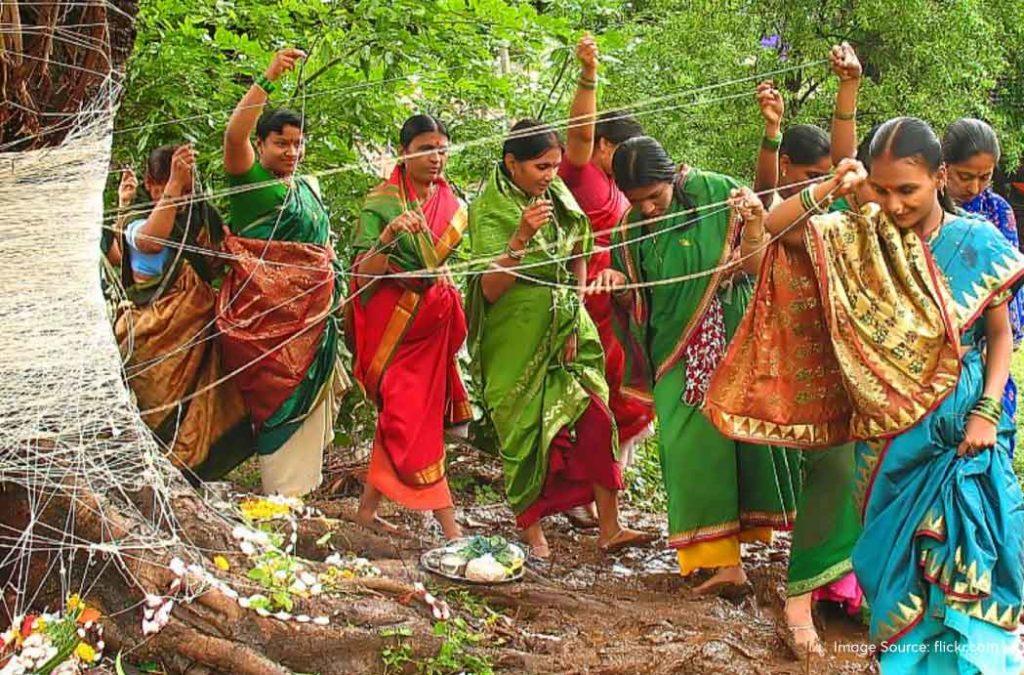
The puja in the morning marks the beginning of the fast.
In the evening, they perform another puja by lighting the diya, reading the story of Savitri and Satyavan and breaking their fast. Some would also perform the Kanya Pujan on this day.
Kanya Pujan is a ritual where women invite nine young girls to the house, each representing a form of Goddess Durga. They wash their feet respectfully, give them gifts and ornaments, give them the holy aarti and seek their blessings. They also feed them nutritious food. The Kanya Puja is done to hail the feminine energy and to seek blessings from Goddess Durga who is believed to be the destroyer of evil and an ideal wife with a noble character.
There are several religious festivals in India but Vat Savitri Puja stands out as a beautiful ritual that brings couples together and keeps them happy and healthy.
Traditional attires of women on the day
Women dress up in their wedding attires on the day of Vat Savitri Puja. They all look like vibrant brides with their mangalsutra, vermillion on the head and toe rings to the feet.

However, if they are unable to wear their wedding clothes for any reason, they can also wear clothes in red, orange, green or yellow colours. Females avoid wearing clothes in white, blue or black colours as they signify mourning and loss.
How is Vat Purnima celebrated across India?
Traditionally, the festival is celebrated over a span of three days – the 13th, 14th and 15th day of the Jyeshta month. Women use sandalwood and rice flour to draw the picture of Satyavan, Savitri, Yama and the banyan tree. They worship the picture with Vat leaves and chant mantras to seek the blessings of God. They tie the holy thread around the banyan tree and offer copper coins to the tree. Women greet each other by saying ‘Janm Savitri Ho’ which means ‘Be like Savitri’ or may your life be like that of Savitri’s.
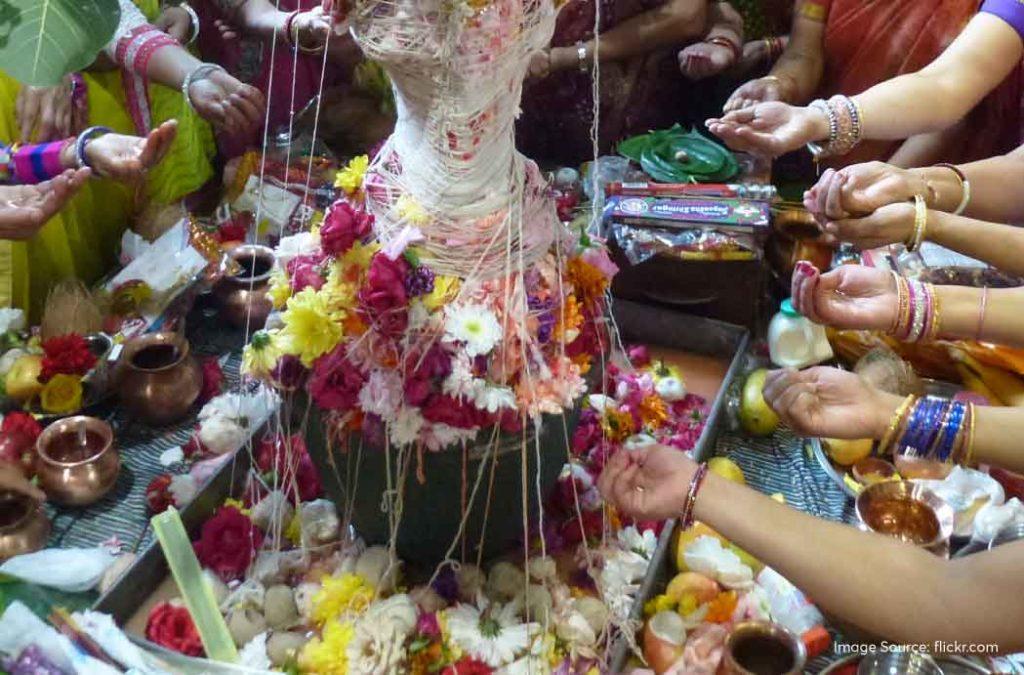
People now use photos of the couple to offer prayers unlike making idols or pictures on their own. In the western and northern states of India people celebrate Vat Savitri Puja grandly. People from Karnataka and Goa also celebrate the festival. However, the tradition of observing the fast is not very prevalent in states like Andhra Pradesh, Telangana and Tamil Nadu.
Physical and psychological benefits of fasting
There are physical and psychological benefits to performing the Vat Savitri Puja fast. Not eating for more than 12 hours can cleanse the body and detoxify the organs. Some women also refrain from drinking water and this can improve the cell turnover rate. It helps the body work more efficiently from the next day.
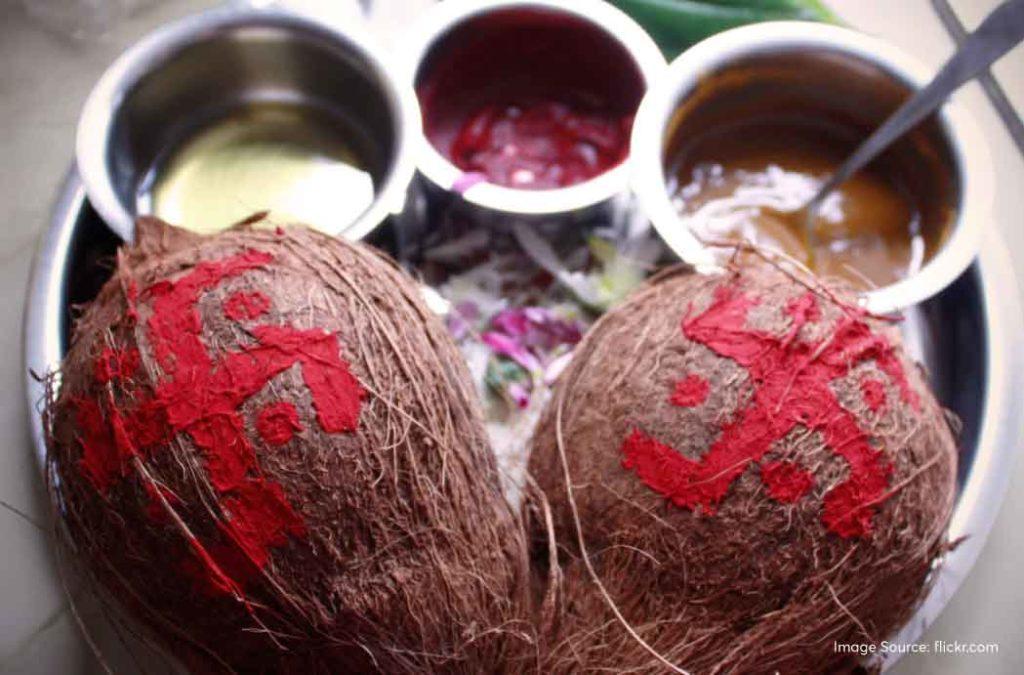
Women sit in the puja and meditate to seek the blessings of God. Meditation is a great way to reduce mental stress and it also calms the body and lowers blood pressure. As the festival is performed together as a community, women feel more secure and safe with a group that shares common values. They experience a sense of belongingness that can drive away feelings of depression and anxiety.
FAQs
1 – When will Vat Savitri Puja 2024 be celebrated?
A – Vat Savitri Puja 2024 will be celebrated on 6th June and 21st June according to the Amanta and Purnimanta lunar calendars respectively.
2 – Can unmarried women perform vat Savitri Puja?
A – Yes, unmarried women can perform Vat Savitri Puja and seek blessings from the Almighty to get an ideal husband.
3 – Which fruits are offered to God during Vat Savitri Puja?
A – Fruits like jackfruit, grapes, oranges, mosambi, pineapples, dates, apples, bananas and watermelons are offered during the puja.
4 – Why should we pray to the Banyan tree during Vat Savitri Puja?
A – Banyan tree signifies long life, wellness and it is also the symbol of the three Gods – Brahma, Vishnu and Maheshwara. So, people offer prayers to the tree and seek blessings from the deities.
Vat Savitri Puja is a great way to establish a cordial relationship with your partner. It is a festival that celebrates the union of two souls and the devotion that a wife has towards her husband. It signifies love, togetherness and a wish to stay together in all the lifetimes.
Have you performed the Vat Purnima puja before? Tell us all about it in the comments section.



